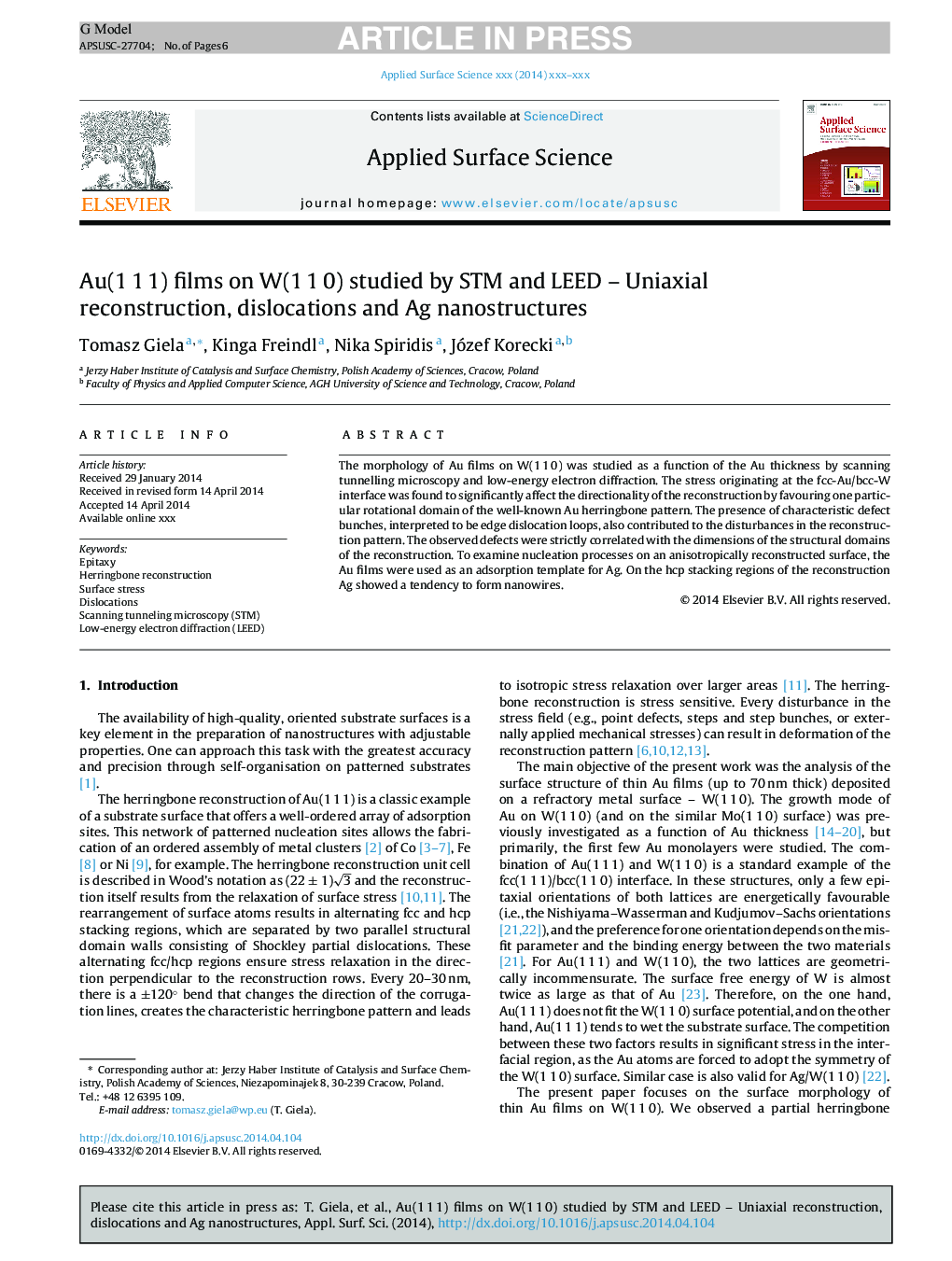| Article ID | Journal | Published Year | Pages | File Type |
|---|---|---|---|---|
| 5349855 | Applied Surface Science | 2014 | 6 Pages |
Abstract
The morphology of Au films on W(1Â 1Â 0) was studied as a function of the Au thickness by scanning tunnelling microscopy and low-energy electron diffraction. The stress originating at the fcc-Au/bcc-W interface was found to significantly affect the directionality of the reconstruction by favouring one particular rotational domain of the well-known Au herringbone pattern. The presence of characteristic defect bunches, interpreted to be edge dislocation loops, also contributed to the disturbances in the reconstruction pattern. The observed defects were strictly correlated with the dimensions of the structural domains of the reconstruction. To examine nucleation processes on an anisotropically reconstructed surface, the Au films were used as an adsorption template for Ag. On the hcp stacking regions of the reconstruction Ag showed a tendency to form nanowires.
Keywords
Related Topics
Physical Sciences and Engineering
Chemistry
Physical and Theoretical Chemistry
Authors
Tomasz Giela, Kinga Freindl, Nika Spiridis, Józef Korecki,
